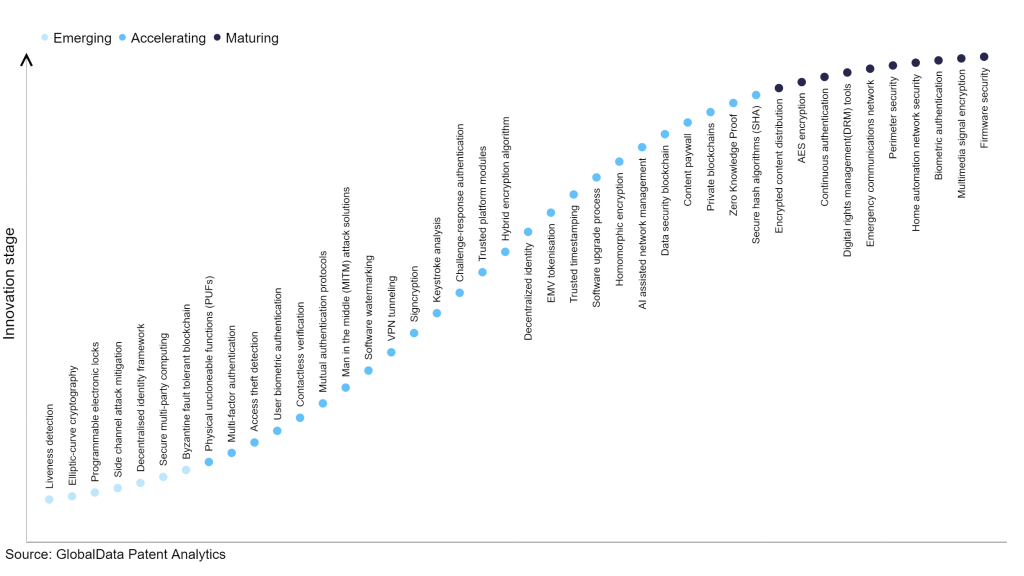Cybersecurity innovation: Leading companies in AI-assisted network management

The technology industry continues to be a hotbed of innovation, with activity driven by the emergence and accelerated adoption of disruptive technologies such as artificial intelligence (AI), internet of things (IoT) and mobility, and digital service models, as well as growing importance of technologies such as next-generation firewalls (NGFW), security information and event management (SIEM), and intrusion detection system (IDS). While use of these technologies has enabled the enterprises to digitally transform their operations, it has also opened several threats in the form of security breaches and unauthorised access to data, which has been driving focus on cybersecurity. In the last three years alone, there have been over 3.6 million patents filed and granted in the technology industry, according to GlobalData’s report on Innovation in Cybersecurity: AI-assisted network management.
However, not all innovations are equal and nor do they follow a constant upward trend. Instead, their evolution takes the form of an S-shaped curve that reflects their typical lifecycle from early emergence to accelerating adoption, before finally stabilising and reaching maturity.
Identifying where a particular innovation is on this journey, especially those that are in the emerging and accelerating stages, is essential for understanding their current level of adoption and the likely future trajectory and impact they will have.
300+ innovations will shape the technology industry
According to GlobalData’s Technology Foresights, which plots the S-curve for the technology industry using innovation intensity models built on over 2.5 million patents, there are 300+ innovation areas that will shape the future of the industry.
Within the emerging innovation stage, byzantine fault tolerant blockchain, secure multi-party computing, and decentralized identity framework are disruptive technologies that are in the early stages of application and should be tracked closely. Secure hash algorithms (SHA), zero knowledge proof and private blockchains are some of the accelerating innovation areas, where adoption has been steadily increasing. Among maturing innovation areas are firmware security, multimedia signal encryption and biometric authentication, which are now well established in the industry.
Innovation S-curve for cybersecurity in the technology industry

